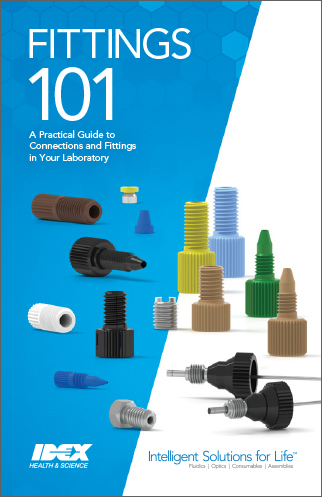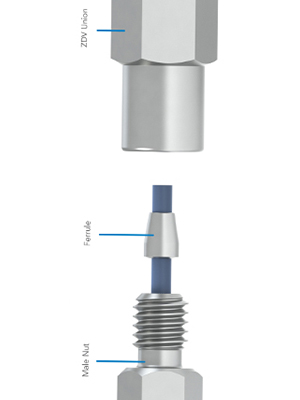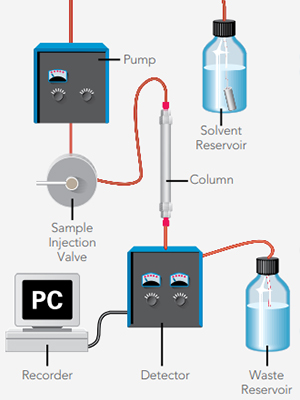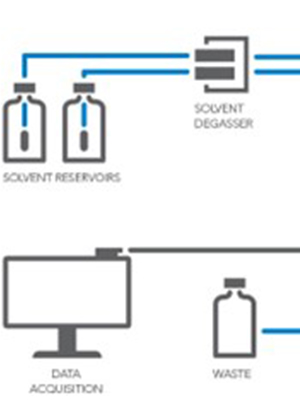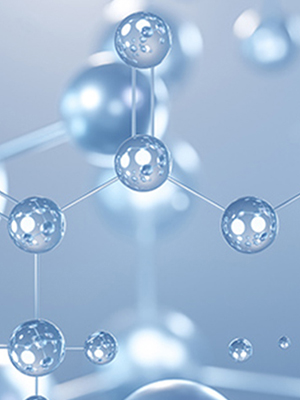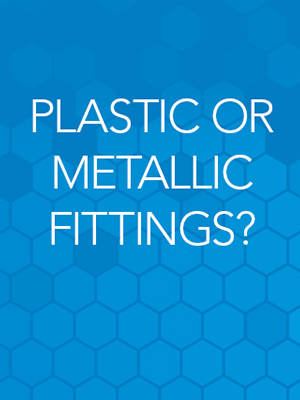

HPLC Fittings Guide
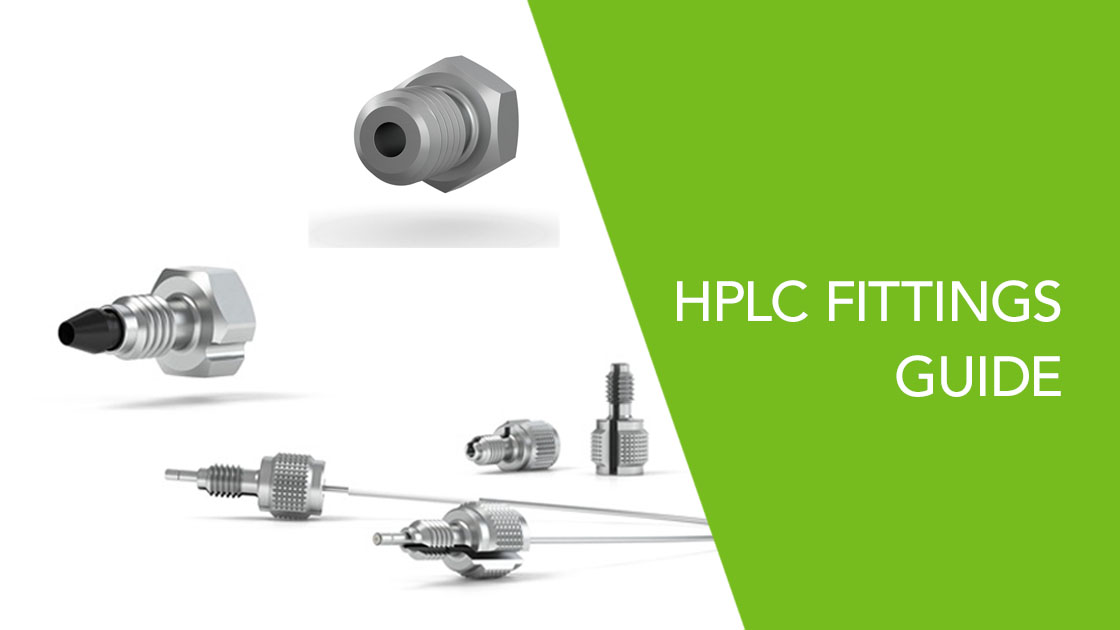
What is HPLC?
HPLC is an acronym that stands for High-Performance Liquid Chromatography. It is an analytical process designed to separate, quantify, and analyze components of a chemical mixture. Ultra-High Performance Liquid Chromatography (UHPLC) is HPLC operated at extremely high pressure (>18,885psi / 1300 bar). This technique is generally non-destructive, which makes it a very useful tool in the laboratory, as it allows the scientist to continue performing other tests on his or her sample after it has been analyzed using an HPLC system.
How Does an HPLC Work and What Makes up an HPLC System?
Separation occurs by introducing a sample into a liquid chemical stream known as the mobile phase. The mobile phase breaks down the sample into individual components and carries the sample to a specialized tube called the column. The column is packed with small, chemically-active particles known as the stationary phase. Inside the column, the sample interacts with the stationary phase and separates target compounds. The target compounds are then swept individually to the detector for measurement. The data is then summarized in a printed graphical plot called a chromatogram.
Example Chromatogram
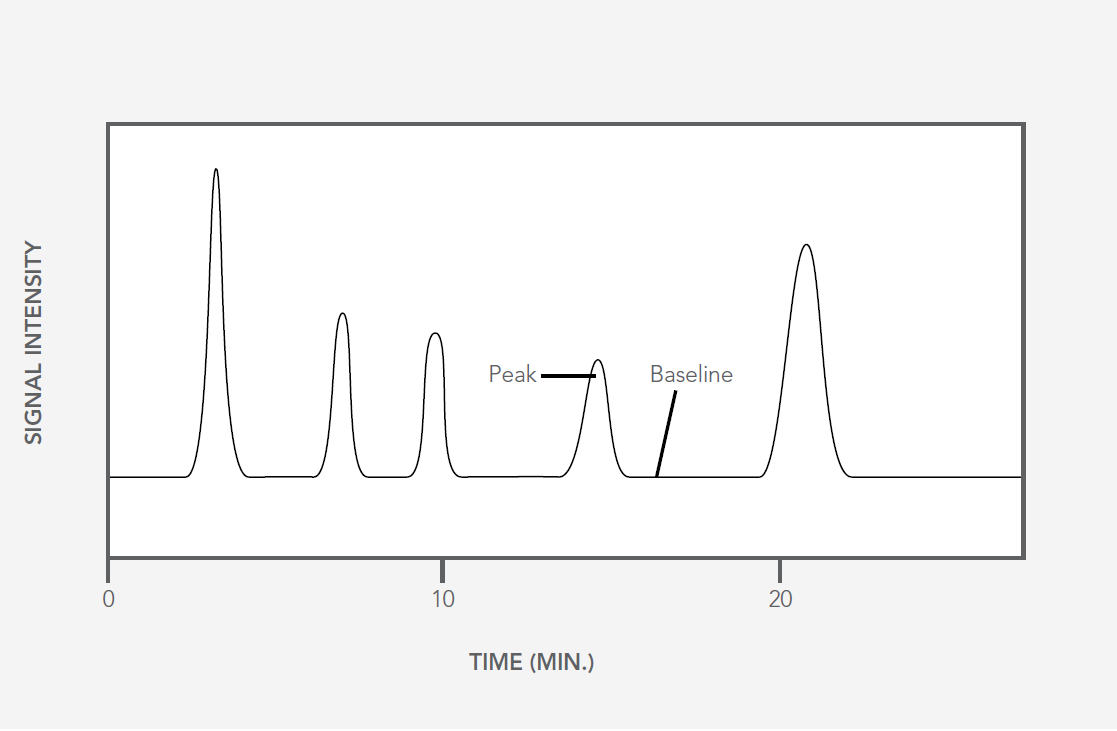
Sample Fluidics Pathway for HPLC
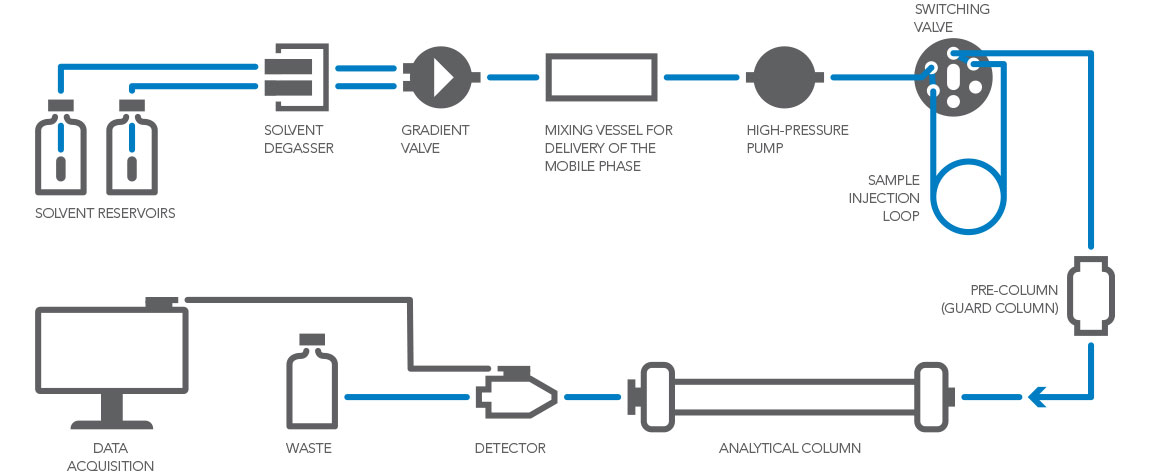
Learn What Components Make an HPLC System
Learn What Components Go Where in an HPLC System
What Role Do Fittings Play in HPLC?
It is critical to choose the right fittings for HPLC applications. Improper selection or installation of fittings can lead to leaks or the formation of dead volume, both of which can result in poor HPLC performance.
Problems with Incorrect HPLC Fittings
1. System Leaks
One of the most commonly encountered problems with fittings is a leak somewhere in your HPLC system. Often, a leaking connection is due to a problem with the ferrule's positional placement on the tubing wall. One option to alleviate potential leaks is Fingertight fittings, which are typically polymer fittings that work in the same receiving ports as their all-metal counterparts.
2. Dead Volume
Dead Volume is unmoving or unswept volume in your hplc system Dead volume, particularly in capillary connections can cause some undesirable chromatographic effects, including: run-time delays, broadened peaks, poor resolution, sample carry-over, or split peaks.
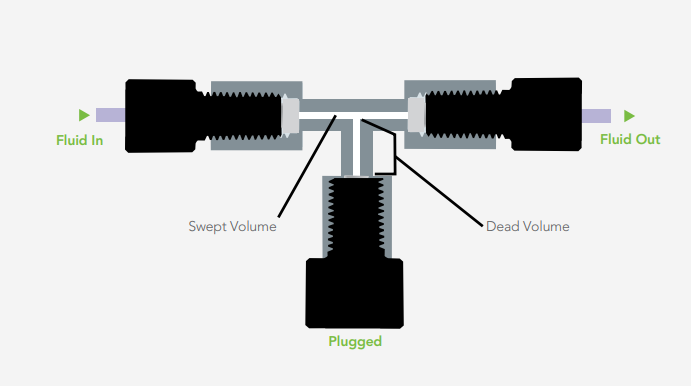
Internal Dead Volume Defined
A great way to minimize the dead volume in the system is to match the tubing ID as closely as possible with the diameter of the thru-holes in your equipment. Our manufacturing team is fully equipped to construct to exact tubing specifications. We cut, form, produce, test, and label every piece, so it’s ready to integrate directly into a fluidics system—with OD’s up to 0.500”; ID’s down to 0.001”; and tolerances down to +/-0.0005”.
Learn More About Our Custom Tubing Capabilities
What Materials to use for HPLC Fittings
One of the most common dilemmas in choosing fittings is deciding between plastic and metallic fittings. Important considerations when selecting a fitting are chemicals being used, sample composition, system pressure, and operating temperature.
Learn About Polymer Compatibility

